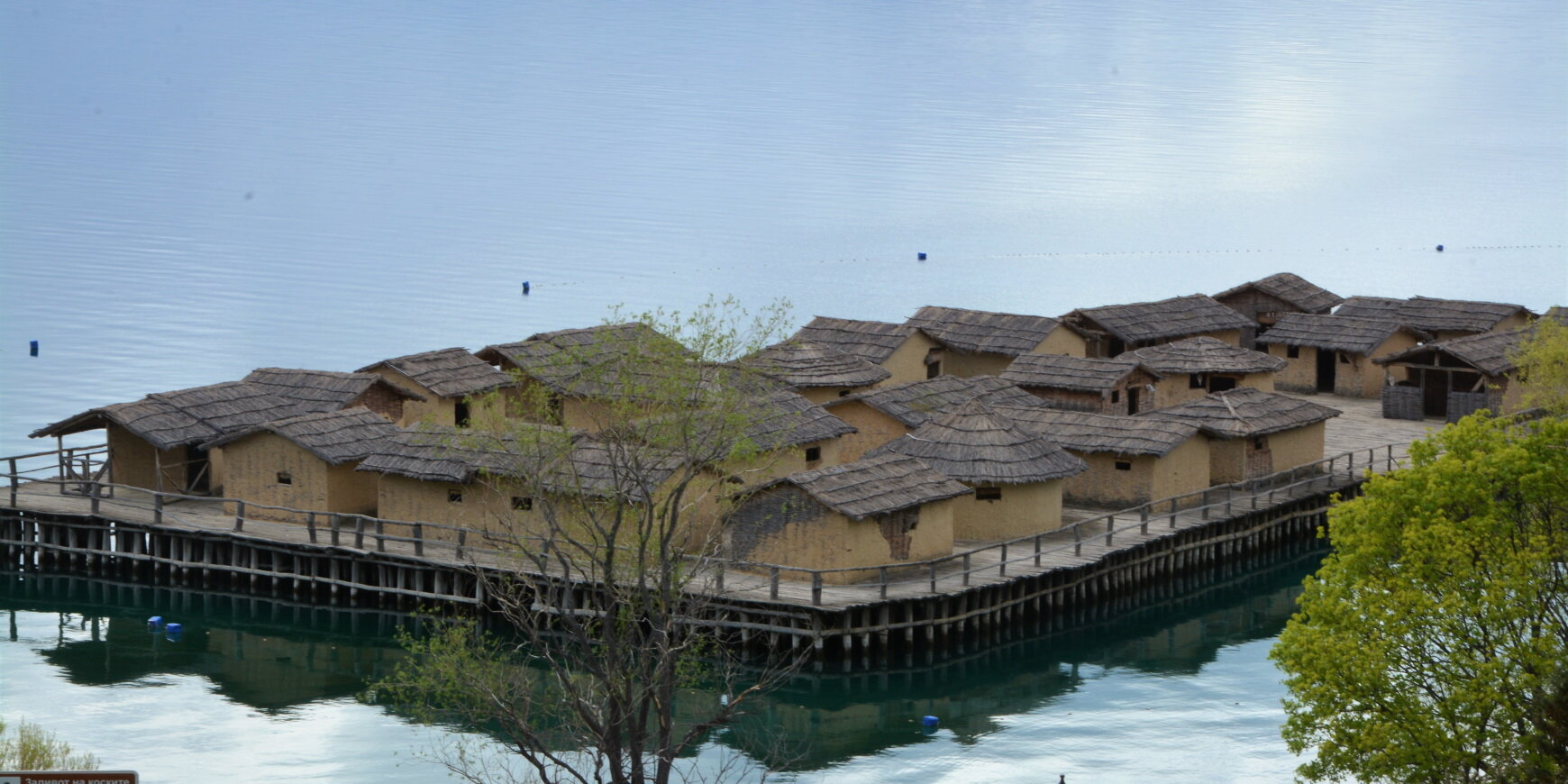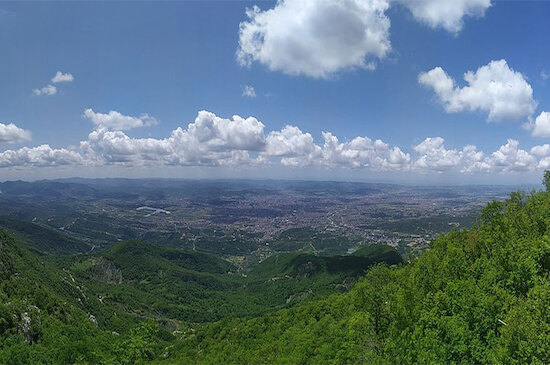The Water Museum, also known as the 'Bay of Bones,' is an archaeological complex located at the excavation site of 'Ploca Mikov Grad,' near Gradishta and Pestani along the Ohrid coast.
The underwater research carried out in the Bay of Bones provides material and information about the life of prehistoric people who lived in these areas around Lake Ohrid. Divers found 6,000 piles of wood at the bottom of the lake, along with many other artifacts and bones.
That is why the name of this museum on the water is the Bay of Bones. Another interesting fact is that the divers found bones. One explanation for this is that, at that time, human bodies were burned. All the materials the divers found date back to the Late Bronze and Early Iron Ages, from 1299 BC until 700 BC. At that time, the settlement was three times larger than the replica of the settlement that can be visited today. The museum was built in 2008, and later, 8 replicas of prehistoric houses were built on the platform above the lake.
The platform is connected to the ground by a wooden bridge. In prehistoric times, there was also a bridge, but it was movable. With this movable bridge, prehistoric people could protect themselves from dangers coming from the land. As soon as the construction of this museum was completed, it became one of the most visited places in Macedonia, so the government decided to expand the museum. In 2010, the settlement on the water was expanded, and 16 houses were built.



















